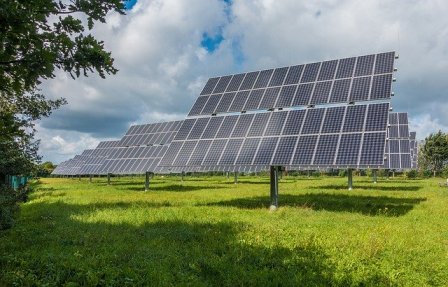
Solar Mini Grids Could Power Half a Billion People by 2030
Solar mini grids can provide high-quality uninterrupted electricity to nearly half a billion people in unpowered or underserved communities and be a least-cost solution to close the energy access gap by 2030. But to realize the full potential of solar mini grids, governments and industry must work together to systemically identify mini grid opportunities, continue to drive costs down, and overcome barriers to financing, says a new World Bank report.
Around 733 million people – mostly in Sub-Saharan Africa – still lack access to electricity. The pace of electrification has slowed down in recent years, due to the difficulties in reaching the remotest and most vulnerable populations, as well as the devastating effects of the COVID 19 pandemic. At the current rate of progress, 670 million people will remain without electricity by 2030.

“Now more than ever, solar mini grids are a core solution for closing the energy access gap,” said Riccardo Puliti, Infrastructure Vice President at the World Bank. “The World Bank has been scaling up its support to mini grids as part of helping countries develop comprehensive electrification programs. With $1.4 billion across 30 countries, our commitments to mini grids represent about one-quarter of total investment in mini grids by the public and private sector in our client countries. To realize mini grids’ full potential to connect half a billion people by 2030, several actions are needed, such as incorporating mini grids into national electrification plans and devising financing solutions adapted to mini grid projects’ risk profiles.”
The deployment of solar mini grids has seen an important acceleration, from around 50 per country per year in 2018 to more than 150 per country per year today, particularly in countries with the lowest rates of access to electricity. This is the result of falling costs of key components, the introduction of new digital solutions, a large and expanding cohort of highly capable mini grid developers, and growing economies of scale.
Solar mini grids have become the least-cost way to bring high-quality 24/7 electricity to towns and cities off the grid or experiencing regular power cuts. The cost of electricity generated by solar mini grids has gone down from $0.55/kWh in 2018 to $0.38/kWh today. Modern solar mini grids now provide enough electricity for life-changing electric appliances, such as refrigerators, welders, milling machines or e-vehicles. Mini grid operators can manage their systems remotely, and paidsmart meters enable customers to pay as they use the electricity. Connecting 490 million people to solar mini grids would avoid 1.2 billion tonnes of CO2 emissions.
Information Source: Read More
ENERGY | ELECTRIC POWER | NATURAL GAS | AUTOMOTIVE | CLIMATE | RENEWABLE | WIND | TRANSITION | LPG | OIL & GAS | SOLAR | ELECTRIC VEHICLES| BIOMASS | SUSTAINABILITY | OIL PRICE |COMMODITIES | ELECTRIC POWER | NUCLEAR | LNG | REFINED PRODUCTS | SHIPPING|


